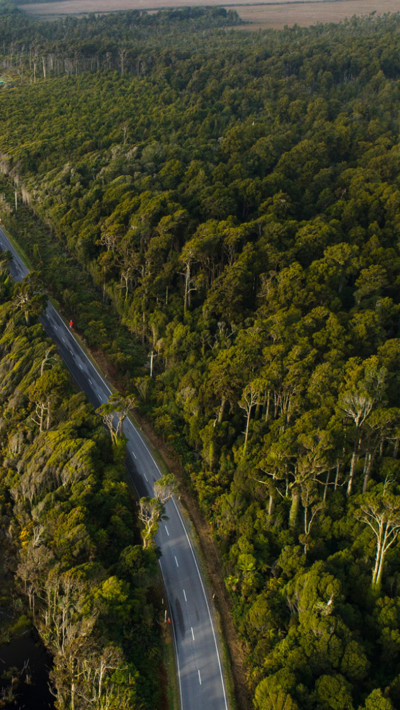Contents
Although many countries are at greater jeopardy from climate change than New Zealand, Lloyd’s has us second only to Bangladesh in terms of our exposure to national catastrophe. This largely reflects our vulnerability to earthquakes and flood.
The good news is that, at least for now, Lloyd’s also has us with the fourth highest insurance penetration levels in the world – after Netherlands, South Korea and the United States.
Because risk is the insurance industry’s stock in trade, it has been the corporate leader in climate change awareness, both internationally and at home. So much so that Climate Change Minister James Shaw credits it with chasing him into politics.
He told a conference shortly after his election as Green Party Co-leader that his “Road to Damascus moment” came when, working as a consultant in London for PwC, he read a report commissioned by the insurance sector on the long-term effects of climate change.
"It did some projections based on the available data and it was all very calm and methodical. And it concluded that the cumulative impact of extreme weather events and flooding…would cause such catastrophic damage to property and loss of lives over the upcoming decades that it would bankrupt the entire insurance industry by the year 2050.
"My first thought was, "Why isn’t anyone doing anything about this?" My second thought was, "Why aren’t I doing anything about this? I’m an environmentalist!"
Our view
Despite the insurance industry’s presentiments of doom and oblivion (above), we are sure it will survive climate change. But that survival will not be automatic, and will require adaption on both sides of the table.
Higher premiums will be part of the mix but, as Insurance Council CEO Tim Grafton, has said, insurers have “other levers available to them, including reducing the cover they offer, introducing sub-limits for some types of cover, or increasing customers’ excesses”.
There is also a real likelihood of insurance retreat as “risks” become certainties, because insurers do not insure against certain loss.
Other possible responses in the short-term include:
- a sharp acceleration in the trend toward risk-based insurance pricing for property insurance (with large premium increases for the owners of high-risk assets)
- new insurance products that respond to an environmental parametric relevant to the performance of the business, and alternative instruments, including weather derivatives, and
- an acceptance by mainstream insurers that their gatekeeper role implies a responsibility to promote the transition to a low carbon economy, especially given the increasing adoption of Environmental, Social, Governance (ESG) sustainability reporting.
Over the longer-term, these trends may result in:
- fewer players, or more – depending on whether volume provides resilience, or more niche insurance markets develop, and
- renewed interest in, and enhancement of, state backed insurance, like New Zealand’s EQC. Could a future government bring EQC back into the non-residential market, as was the position before 1993?
The gatekeeper role
When Shaw had his Damascus experience, climate change had yet to enter the mainstream consciousness. But now it is very much front of mind and is manifesting in public pressure on companies and industries to take a broader perspective than short-term economic growth.
Because insurance cover is a prerequisite to financing, and finance is a prerequisite to development, both industries have gatekeeper roles – which can put them at the pointy end of change.
At the very small end of the spectrum were the recent Fossil Free Banks protests in Wellington (350 people), Christchurch (20), Nelson and Dunedin. At the other end is the DC-based Finance Project’s international Unfriend Coal campaign which claims to have signed up 20 major insurers and reinsurers, including Allianz, Munich Re, Swiss Re, AXA, Zurich and Generali.
However it is worth noting that the campaign’s recent efforts to stymie huge coal investments in Poland and Australia were unsuccessful. The Polish expansion has secured insurance backing, and none of the five major brokers approached by opponents of the Adani Group’s Carmichael coal mine project in Queensland agreed to withhold support.
So, pending stronger regulatory intervention and the availability of cleaner energy alternatives to upset the economics around coal, projects which present a viable business case can succeed. But the tide of investor and public sentiment is against them, as reflected in the growing number of corporates and regulatory regimes that are promoting ESG principles and applying them to their business activities and decision-making.
One example is ESG loans, under which the financier requires the potential borrower to obtain an ESG rating from a prescribed ESG report provider which must be renewed annually. Depending on the direction of travel, the cost of the loan will either be adjusted up (an ESG surcharge) or adjusted down (an ESG discount).
The NZX has been actively promoting ESG reporting since 2016, and now requires it of listed issuers under the NZX Code. The intention is to galvanise companies to take a more responsible attitude toward the environment and the society in which they operate – including, by implication, the achievement of New Zealand’s emissions reduction targets.
The enforcer role
Clearly insurers can also decline insurance cover where they find the underwriting risk unacceptable, or raise the price, or allocate more of the risk to the insured. This power exists over the life of the asset, and any associated loans or other contracts, as insurance policies are generally negotiated annually.
Overseas evidence suggests that high insurance premiums and the unavailability of insurance has a stronger impact on private decision making than the uncertain risk of extreme events.James Shaw to the IAG climate change adaptation summit in April 2019
Climate change risks
Physical risks
These are the direct and obvious physical manifestations of climate change, and include extreme weather events, sea level rise, tsunami and increased seismic and volcanic activity (the science on this is mixed but there is a view that, as the glaciers melt, the weight on the Earth’s crust is reduced, causing an “isostatic rebound” which can reactivate faults and lift the magma chambers that feed volcanoes).
New Zealand also has a very long coastline and a number of areas which are prone to flood.
Preliminary research shows we could lose 125,600 buildings, at a replacement cost of $38b, if sea levels rose one metre.National Institute of Water and Atmospheric Research (NIWA)
And the risks are not just to physical property. There are also health effects arising from increasing temperatures and higher humidity.
Swiss Re, one of the world’s leading reinsurance providers, has identified the impact of climate change on the life and health insurance sectors as one of its top five emerging risks for 2019, saying that it will extend the transmission season and geographical range for many infectious diseases. This will have implications for businesses supplying health cover to their employees and – more generally – through more days lost to sick leave.
Risk minimisation
Much of what happens – the weather effects, and the government policy response to climate change risk, including the imposition of a meaningful carbon price – will be beyond the control of business. But there are actions, beyond reducing their own emissions, that businesses can take. These include:
- lowering their exposure to climate change effects – e.g., quitting vulnerable assets and investing in resilient ones, and developing business plans to accommodate predicted market changes
- continually reviewing insurance coverages to adapt to market responses such as increasing premiums, changing deductibles, modified and limited coverage and products, and the development of new products, and
- anticipating and planning for alternative strategies where cost effective insurance is no longer available.
Legal risks
The head of insurance at the Australian Prudential Regulatory Authority (APRA) recently warned corporate Australia that the long-term risks posed by climate change “are material, foreseeable and actionable now”.
Businesses which fail to respond to these challenges put shareholder value at risk. This risk arises in a variety of ways: by failing to anticipate and mitigate climate change risk, by making poor decisions which allow assets to become stranded or result in insurance becoming unaffordable, or by failing to secure needed insurance (including on ESG grounds, as discussed above).
The risk for listed companies in particular, of legal challenge will only increase:
- as the information relating to climate change becomes more accurate and more precise. The Climate Change Response (Zero Carbon) Amendment Bill will promote this process because it will require the Climate Change Commission to produce a National Climate Change Risk Assessment every five years, and will require the Government to respond with a National Adaptation Plan
- with the continued growth of litigation funders, and
- as the case law develops (including successful claims in comparable jurisdictions e.g. the UK and Australia).
Risk minimisation
- Apply a climate change lens to business decisions.
- Ensure you provide effective climate-related financial disclosure.
- Make sure that your D&O insurance is adequate and well-designed – and expect to pay more for it.
Primary D&O premiums for the ASX200 rose by a median 89% in the first half of last year and 122% in the second half, according to Insurance News Australia. The rise was driven by increased legal exposure from the increasing incidence of class actions in Australia, but climate change was also identified as a factor.
We do not have the equivalent D&O data for New Zealand but have been told by an insurance industry source that the liability market here is “as hard as it has ever been”.
Future insurance trends and products
Practical business responses we anticipate, or would recommend, are:
- a greater focus on bespoke products, and more “shopping around” to ensure the best insurance coverage possible – less of a set and forget approach
- more tailored policies reflecting the specific risk profile of the insured rather than the generic features of the industry or sector to which the insured belongs
- a higher level of engagement by the insured, involving senior managers and the board, and
- more detailed questioning by the insurer of the insured as insurance policies come up for renewal.
Some of this capability will be facilitated and reinforced by technologies supporting more sophisticated and granular data collection, collation and analysis.
The New Zealand regulatory environment is favourable to the introduction of new insurance products and overseas markets have already seen the development of (for example) parametric insurances, which could have a role here, particularly in the context of New Zealand’s agricultural economy.
These insurances are intended to complement traditional insurance and are based on a parameter that is critical to the client’s business. In the climate context this could be rainfall levels or wind speed. The payment amount is fixed in advance and the contract is paid out immediately when the threshold condition is met or exceeded, regardless of whether a loss has occurred.
The advantage to businesses of these arrangements is that the immediate pay-out can be used to initiate mitigation strategies and to keep the business afloat and wages paid while these strategies are engaged.


































































































